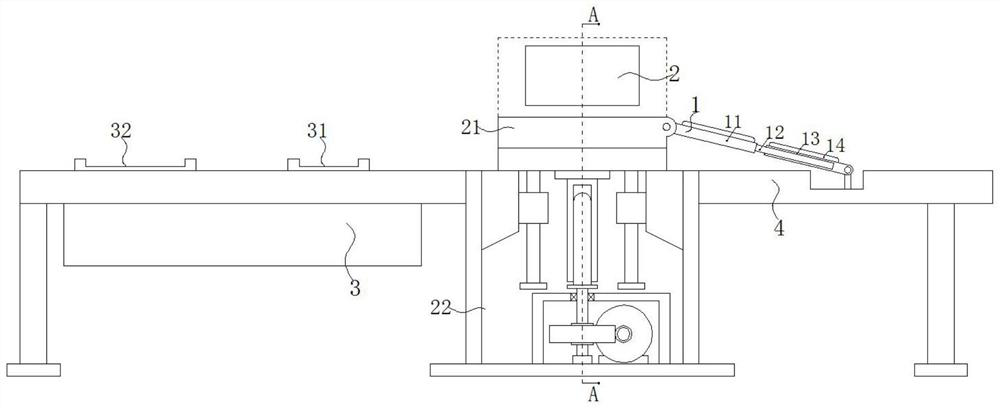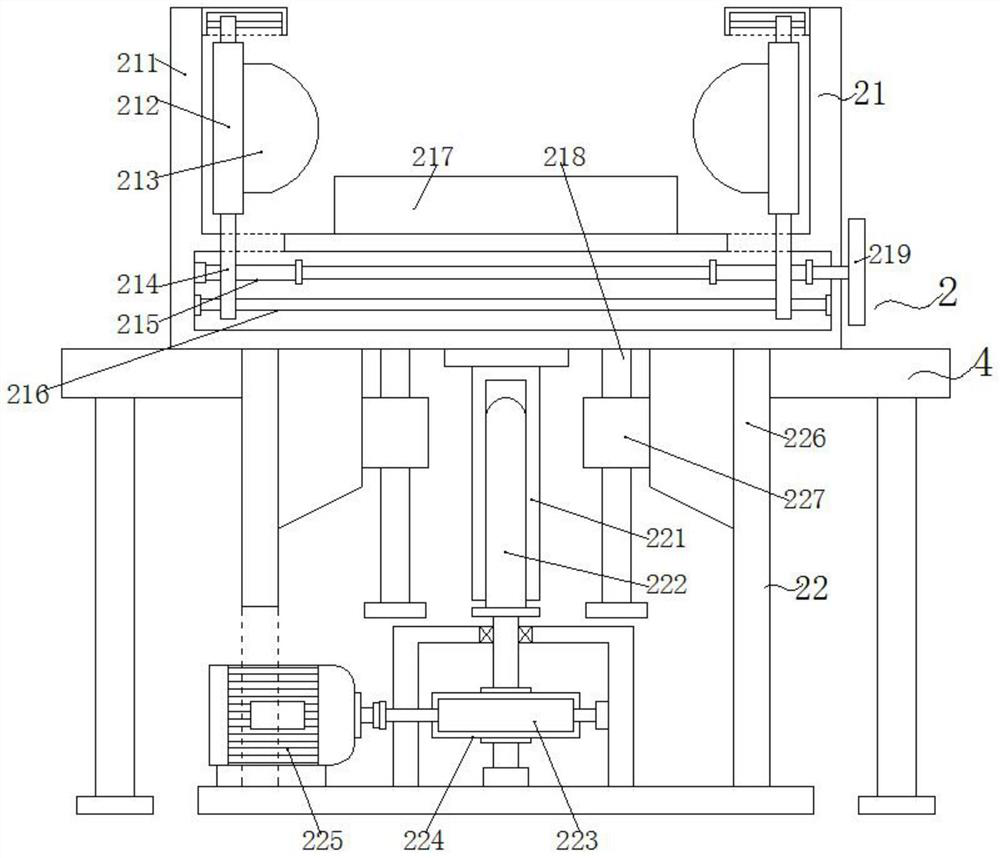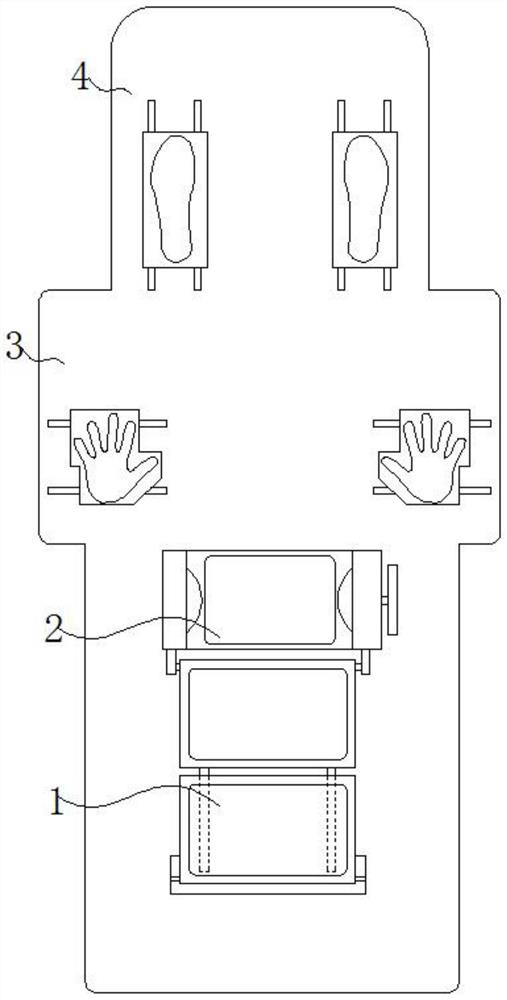Passive pelvic rehabilitation training device for traditional Chinese medicine gynecology department
A rehabilitation training and passive technology, applied in passive exercise equipment, physical therapy, etc., can solve the problems of air bag swelling, unfavorable pelvic repair work, easy fatigue, etc., achieve good elasticity, promote blood circulation, and ensure comfort sexual effect
- Summary
- Abstract
- Description
- Claims
- Application Information
AI Technical Summary
Problems solved by technology
Method used
Image
Examples
specific Embodiment approach 1
[0035] Specific implementation mode one: please refer to Figure 1-9 , the present invention provides a passive pelvic rehabilitation training device for traditional Chinese medicine gynecology, comprising: a waist support structure 1, a pelvic rehabilitation structure 2 and a limb driving structure 3;
[0036] The lumbar support structure 1 is installed on the upper right side of the rehabilitation bed body 4, and the end of the lumbar support structure 1 is hinged with the pelvic bone rehabilitation structure 2, and the pelvic bone rehabilitation structure 2 is installed on the left side of the pelvic bone rehabilitation structure 2, and the pelvic bone rehabilitation structure 2 The structure 2 is set on the upper left side of the rehabilitation bed 4;
[0037] The pelvis rehabilitation structure 2 is composed of a clamping structure 21 and a lifting structure 22, and two groups of splints 212 are installed inside the limit frame 211 of the clamping structure 21, and the bo...
specific Embodiment approach 2
[0040] Embodiment 2: This embodiment is a further limitation of Embodiment 1. The lumbar support structure 1 includes a first carrier 11, an adjustment rod 12, a second carrier 13 and a cushion 14, and the first carrier 11 and the second The two carrier boards 13 are arranged obliquely, and at the same time, the first carrier board 11 and the second carrier board 13 are connected by two sets of adjustment rods 12 , and the adjustment rods 12 are fixedly arranged at the ends of the first carrier board 11 .
[0041] Such as figure 1 and image 3 As shown: the working mode of the lumbar support structure 1 is: the patient lies on the rehabilitation bed 4, and the patient's waist is carried on the first carrier board 11 and the second carrier board 13 to support the patient's lower back. When the clamping structure 21 moves upwards, it drives the first carrier board 11 to move, so that the angle between the first carrier board 11 and the rehabilitation bed 4 increases, so as to s...
specific Embodiment approach 3
[0042] Embodiment 3: This embodiment is a further limitation of Embodiment 2. The end of the adjustment rod 12 away from the first carrier plate 11 is plugged into the adjustment groove provided inside the second carrier plate 13. The first carrier plate 11 and the second carrier plate 11 The surfaces of the two carrier boards 13 are provided with cushions 14 , and the lower right side of the second carrier board 13 is hinged to the surface of the rehabilitation bed 4 .
[0043] Such as figure 1 As shown: the surfaces of the first carrier board 11 and the second carrier board 13 are all provided with cushions 14, the setting of the cushions 14 improves the comfort of the patient in use, and the first carrier board 11 and the second carrier board 13 The length between them can be changed to adapt the angle between the first carrier board 11 and the rehabilitation bed 4 .
PUM
 Login to View More
Login to View More Abstract
Description
Claims
Application Information
 Login to View More
Login to View More - R&D
- Intellectual Property
- Life Sciences
- Materials
- Tech Scout
- Unparalleled Data Quality
- Higher Quality Content
- 60% Fewer Hallucinations
Browse by: Latest US Patents, China's latest patents, Technical Efficacy Thesaurus, Application Domain, Technology Topic, Popular Technical Reports.
© 2025 PatSnap. All rights reserved.Legal|Privacy policy|Modern Slavery Act Transparency Statement|Sitemap|About US| Contact US: help@patsnap.com



